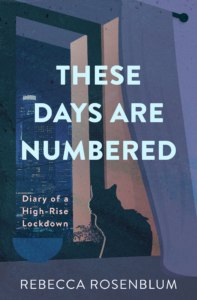July 9th, 2024
How to try to get your book published
Occasionally I get asked about the steps to getting a book published. I’m neither the best nor the worst person to ask about this. I do actually know what to do but my own path was somewhat atypical, so was my time in acquisitions, and my own first book was a while ago, when the industry was more than a bit different. I also feel like this information is very very googlable, but folks seem to like to get individuals’ opinions on these matters, and I try to be accommodating.
I thought I would write up a post on my own blog with this material, to send to people who email me about it, as also happens occasionally. I did field test this material through a bunch of writer/editor pals and it got somewhat better and I’m fine with being asked to clarify individual points, but in general I think if you get really engrossed in this process you should to a more expert blog for more info. This should get you started though.
How to Get Your Book Published
1) Write a book: This is almost always step one for first-timers. There are exceptions, people who can sell books on proposals, but those are folks with huge social media platforms, established publishing careers and track records, and/or at least some small fame in other media. For most of us, the thing that makes publishers want to publish our books is a good book. Write it all the way to the end, revise it until it is good as you can make it, get others to help you make it even better—join a critique group, make a writing friend, take a class—THEN start looking for a publisher. No matter how good the idea is, if no one knows if you can write it well, it doesn’t matter. You will have to write it before they will bet on it. While this is all going on, it can be a great time to be publishing excerpts/stories/poems in small mags to establish a publishing track record, but not a deal-breaker if this doesn’t happen.
2) Figure out which publishers to approach: The way I always recommend to do this is to think about which books and authors you admire, then think about which of those are *like* your book in some way, then see who published those, then look online to see if they are taking submissions. Obviously, no book is exactly like any other—and new authors are often very hard to convince that anyone else has ever written anything at all like their book—but I use the phrase, “Whose books would you be proud to have yours sit on the shelf next to?” and that seems to get the point across. Obviously, the reading of many books in and near one’s own area of interest in writing should be a project of many years but if…somehow one has no relevant books on the shelf to pull down, one can catch up.
3) For the books where the publisher is not taking submissions, perhaps approach agents. These can often be found on the acknowledgements page–and again, searched online to see if they are open to submissions.
4) Once you have a house or agent who seems to be interested in your type of work and is open to subs, follow the submissions guidelines exactly. 50 pages, 3 chapters, whatever point size, a query, a proposal, whatever–just do it. This is a kind of job interview where a writer proves they can follow directions and accommodate someone else’s process.
5) Make a spreadsheet of submissions, document them appropriately, then start writing something new, or renovating your home or training your cat while you wait.
6) Read rejections thoughtfully, get someone to give you a hug or a drink, document them, try to learn something, keep submitting. I know a few writers who have given up after a handful of rejections, without a real sense of how tough the industry is right now and how hard it really is to get published. If the project is important, it’s important to stand by it and keep trying to find a way to share it. Not indefinitely, but for a good while.
7) Self-publishing is a great plan for those who have a plan. The days where we looked down on folks self-publishing their books are over–the readers can decide for themselves. That said, self-publishing puts the writer on the hook for everything–cover design, editorial, publicity and marketing–only authors who have a coherent sense of what it would take to do all that, and are willing to buckle down and do it should even try. It can be very rewarding, but it’s a tonne of work (and if you go that route, I have no further advice–not my wheelhouse).


 Buy the book:
Buy the book: